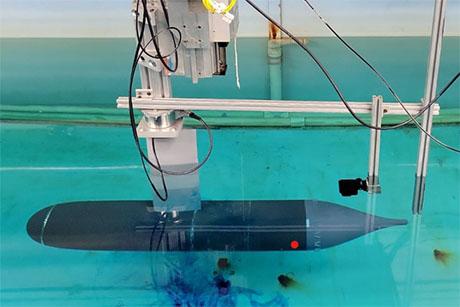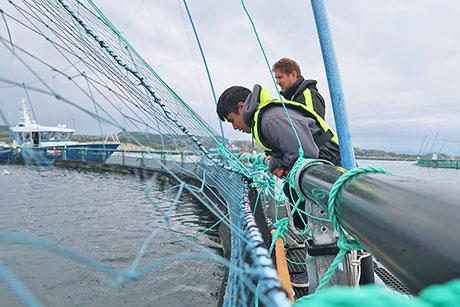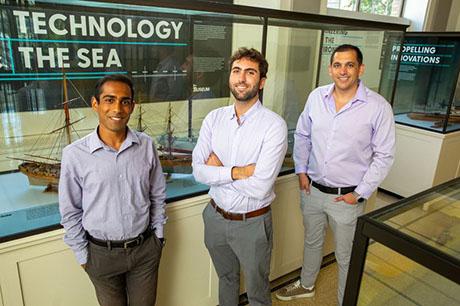ENDLab develops and demonstrates new abyssal ocean sensor to inform deep-sea mining
Simple seabed deep-sea mining vehicle maneuver provides basis for understanding a complex mining pattern, reveals first accurate data collection technique for in situ particle analysis
The ocean’s deep-sea bed is scattered with small rocks, or nodules, containing minerals like nickel and cobalt that are in high-demand. Developing an understanding of the potential environmental impacts and effects associated with collection of these nodules through seabed mining activities is a high priority for society, but until recently no effective and commercial technology existed for monitoring the nature of the disturbed sediment.
A new study by researchers in MechE’s Environmental Dynamics Laboratory (ENDLab) presents novel in situ, high-resolution optical measurements of particle size distributions within sediment plumes generated by a seabed nodule collector vehicle operating deep in the Pacific Ocean. The sensor was developed through a collaboration between the ENDLab, Sequoia Sceintific and the Multiscale Ocean Dynamics group at the Scripps Institution of Oceanography.
“Our research demonstrated the capabilities of a first-of-a-kind deep ocean sensor to characterize abyssal sediment properties in-situ. No other commercial sensor exists that can make this measurement,” says Thomas Peacock, professor and director of the Environmental Dynamics Laboratory (ENDLab) in the Department of Mechanical Engineering, and one of the authors of the study.
The paper’s lead author is MechE postdoctoral associate Souha El Mousadik, PhD ‘23. Co-authors are Carlos Muñoz-Royo and Raphael Ouillon of MIT; Matthew Alford of the Scripps Institution of Oceanography; and Wayne Slade, Chuck Pottsmith, Thomas Leeuw, and Ole A. Mikkelsen of Sequoia Scientific, Inc.
The measurements were obtained using a cutting-edge instrument, the LISST-Real Time Size and Settling Velocity (RTSSV) sensor that was deployed during the 2021 collector trials of Global Sea Mineral Resources, which also involved activities by the EU funded Mining Impact 2 project and the German Federal Institute for Geosciences and Natural Resources (BGR). The sensor will ultimately become a commercial product with many potential applications, including the study of deep-sea mining and ocean carbon capture.
Data collected in situ reveal marked differences compared to previously reported laboratory-based, ex situ measurements. The grain size and other key particle shape characteristics are found to be dependent on multiple factors, including the collector vehicle maneuvers, the time elapsed following sediment discharge, and the complex hydrodynamic processes that generate the sediment in suspension.
“The results showed that ex-situ techniques that have been used to-date get things incorrect, because by collecting sediment samples and studying them in a lab you inevitably impact the properties of the hugely delicate sediment,” says El Mousadik. “The studies have to be in-situ.”
Possessing proper data is crucial to obtain parameters for running accurate computer simulations of the environmental impacts of proposed deep sea mining operations, which will inform decision making by the UN.
“We showed that the sediment characteristics from a complex mining operation matched those from a simple test maneuver, opening the door for the latter to be used as standard procedure that regulators will require of contractors in order to demonstrate their technology is minimizing plumes,” says El Mousadik.
“This is an important step towards figuring out the kind of environmental impact deep-sea-nodule collection could have. The data can now be used to inform future modeling efforts and the development of Standards and Thresholds by the International Seabed Authority,” added Peacock
"In situ optical measurement of particles in sediment plumes generated by a pre-prototype polymetallic nodule collector" is available now online in the Nature journal Scientific Reports.


